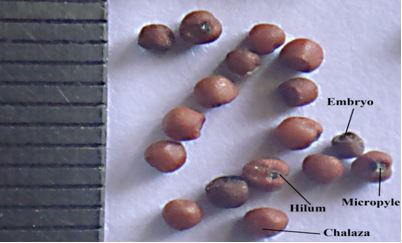Comparative Pharmacognostical & Phytochemical Study of Kodrava (Paspalum scrobiculatum) & Mandua (Eleusine coracana)
DOI:
https://doi.org/10.21760/jaims.8.8.6Keywords:
Kodrava, Paspalum scrobiculatum (PS), Mandua, Eleusine coracana, Millet, Siridhanya, Ayurveda, Shri AnnaAbstract
Reference of Kodrava (Kodo millets) and Mandua (Eleusine coracana) can be well traced in different Samhitas. Acharya Charaka described Kodrava, where it was indicated in disorders of Kapha and Pitta.[1] In Nighantus, Kodrava and Mandua (Finger millets) both mentioned as Laghu, Swadu, Katu Vipaka, Lekhniya, Ruksha, Vatapittaprakopaka.[2] Many plants have been described in Ayurveda in them Ahara holds greater medical importance, this study is an attempt to compare the Pharmacognostical and Phytochemical evaluation between the Kodrava and Mandua, as here the peoples of Uttarakhand called Kodo (Kodrava) and Mandua are same and shopkeepers also knows Kodo in the name of Mandua only. So, on the basis of their Pharmacognostical and Phytochemicals profiles., one can differentiate both the drugs. The Macroscopy and Microscopy of seeds of both the plants were studied as per standard procedures. The powders of both the drug’s seeds used in the experimental study to ascertain its Rasa by dilution method. Both the parts shows the same Rasa i.e., Madhura and Kashaya, Virya Sheet and almost same morphological and microscopical characters like Aleurone layer with Starch grains and oil droplets was present. Embryo can be seen clearly in both the drugs. The dissimilar character in both the drugs was Epithelial cells with Air space and thick walled Endosperm cells present in EC but not in PS. Hence it is concluded that both drugs are different with same family Poaceae.
Downloads
References
Sharma, PV. Charaka Samhita, Vol 2, Reprint. Sutrasthana 7/97-99. 1998; 134. Chowkhamba Orientalia, Varanasi. Ch.Su.27/16, 27/14, 21/25, 25/40.
Pandey Gyanendra, commentator Madanpala Nighantu, Chaukhamba Prakashan Varanasi, Ed.2012, Shalyadi dhanvarga, shloka 59,61, pp 623.
Sharma P V. Dravyaguna vigyans Vol. 1, Chaukhamba Bharti Prakashana, Ed.2010. pg 28.
Sharma, PV. Charaka Samhita, Vol 2, Reprint. Sutrasthana 1998; 134. Chowkhamba Orientalia Varanasi. ,Ch.Su.20/20
Pandey Gyanendra. Shodhala Nighantu, commentator Chaukhamba Krishnadas Academy Varanasi Ed. 2009, Trindhanya varga shloka no. 924, pp 401.
Available on: http://www.efloras.org/florataxon.aspx? flora_id=2&taxon_id=200009759 (accessed on: 14-04-2023).
Gamble, JS. Presidency of Madras. Vol. II. Reprint. 1967 p.461. Botanical Survey of India, Calcutta.
API: The Ayurvedic Pharmacopoeia of India, 1st edition, Part I, Volume V. 2001; Delhi (IN): Government of India, Ministry of Health and Family Welfare, Department of Indian Systems of Medicine & Homoeopathy.
Anonymous. Quality Control Methods for Medicinal Plant Materials. 1998; World Health Organization.
Shah B. and Seth AK. Textbook of Pharmacognosy and Phytochemistry. (2010) Reed Elsevier India Private Limited.
Harborne, JB. Phytocehmical Methods: A Guide to Modern Techniques of Plant Analysis. 1973; Chapman and Hall Ltd.
Yemm EW, Willis AJ. (1954). The estimation of carbohydrates in plant extracts by anthrone. The Biochemical journal, 57(3), 508–514. https://doi.org/10.1042/bj0570508
Mæhre, H. K., Dalheim, L., Edvinsen, G. K., Elvevoll, E. O., & Jensen, I. J. (2018). Protein Determination-Method Matters. Foods (Basel, Switzerland), 7(1), 5. https://doi.org/10.3390/foods7010005
Government of India, Ministry of Health & Family Welfare, Department of Ayush (2007). Ayurvedic Pharmacopoeia of India. Appendix 2.2.2-16. Delhi.















